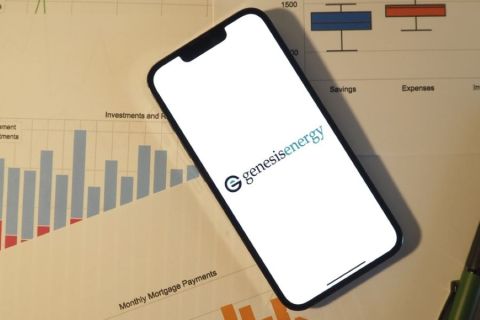ITF recently issued a call for proposals on the topic of geomechanical characterization of unconventional reservoirs. The call was issued as a result of a technology roadmap on the topic of unconventional reservoirs that was defined by ITF’s member companies in March 2012.
The term “unconventional reservoirs” encompasses a range of reservoir types, including tight gas, shale gas, shale oil, and coalbed methane, and it has been reported that unconventional gas accounts for approximately half of total recoverable gas reserves. These reserves are, by definition, more difficult to access than conventional reserves, and to date there has been a varying amount of activity around the world with respect to their extraction.
While there already has been a lot of activity with respect to unconventional reservoirs in the US, there has been less development in Europe. Many companies are currently evaluating the resource and how much knowledge gained from experience in the US is applicable in the European context. Consequently, ITF’s member companies decided to take a roadmap approach to the topic to look at the totality of what has been done, make sense of the remaining gaps, and identify priorities.
Matrix and fracture characterization
The roadmap has identified a number of work streams and resulted in a call on the topic of matrix and fracture characterization in unconventional reservoirs, issued in December 2012. This call sought proposals for projects that ultimately have the potential to optimize the economic development and effective management of unconventional reservoirs and to maximize reserves. To that end, specific areas of interest within the call included interaction between hydraulic fractures and natural fractures, core-based measurement and measurement standards, scaling issues, fluid interaction, and monitoring and interpretation of fracturing.
The call for proposals attracted a good response from researchers, with 26 expressions of interest being submitted to ITF for funding consideration. Two separate technical clarification meetings (TCMs) were held in Houston, where a number of these submissions were presented to an audience of potential sponsors. The TCMs were attended by a wide representation of the ITF member companies who have activities and interests related to unconventional reservoirs, and these meetings provided a valuable opportunity for technology developers to meet interested companies and answer questions about their proposals. ITF currently is seeking decisions and funding commitment on these expressions of interest, with the aim of launching a number of joint industry projects as a result.
Geomechanical characterization
Geomechanics is the study of the mechanical behavior of rock under the action of forces, and activities such as drilling, production, and injection can all result in changes to the stress regime, which can impact drilling operations, completions, and reservoir productivity. As the industry turns its attention to the development of increasingly complex reservoirs, geomechanical characterization is becoming increasingly important, and the roadmap work concluded that there was a pressing need for work in this area to inform development of unconventional reservoirs, for example, in relation to wellbore orientation and well spacing decisions.
A workshop on the topic held in February was attended by specialists in unconventional reservoir geomechanics from ITF’s member companies as well as other invited industry and academic experts to enable a day of informed and focused discussions. A range of topics from the roadmap served as a feedstock for discussion, and the output of the day was used to define the most recent call for proposals, which was issued in 3Q 2013. The call includes six prime areas of concern relating to geomechanical characterization of unconventional reservoirs:
- Failure conditions understanding (the yield envelope). The ultimate prize here is to optimize the hydraulic fracture operation and maximize production at lower cost – in other words, to enable companies to make fractures the way they want them and to predict and design the outcome. There are a number of challenges within this topic, including the development of a robust definition of “fracability,” how to measure it, and the development of a fracability model;
- Coupled fracture models. Within this topic the goal is to obtain a fit-for-purpose reservoir description. Discussions at the workshop highlighted the fact that current models do not couple well with the reservoir description. There is an industry requirement to link the geological model to the fractures and the fluid flow as well as the production data and calibrate this with microseismic data. At the present time reservoir geology is not always sufficiently well characterized to achieve a full understanding of the geological variability. This is often due to the difficulty in making the case to fully characterize the geology in fast-paced development scenarios where the economics are finely balanced, and as a result some wells are not optimized. In some cases a lot of data may be available from numerous wells, and the challenge is really to mine and make sense of these data;
- Understanding in situ stress (through hydraulic methods). In this area the focus is on improving the accuracy of the fundamental inputs in geomechanical modeling. ITF’s member companies felt that improved understanding of the 3-D/4-D stress state is required, particularly when considering the changes associated with production;
- Understanding induced seismicity. With respect to this issue, the aim is to understand the fracture locations and drainage area and to avoid inducing earthquakes. The workshop discussions focused on the need to understand the drainage through effective reservoir conductivity mapping (reservoir flow mapping) since this will lead to better hydraulic fracturing programs and a better understanding of the stimulated rock volume. As a consequence, it will be easier to determine the most efficient well spacing;
- Are models fit for purpose? There are a number of challenges that need to be tackled if the industry is to develop a predictive tool for rock behavior modeling. On a regional scale, these include the variability encountered due to various rock types and their rheologies, heterogeneity, and anisotropy. There also are issues at the material scale relating to material constitutive models and at the wellbore scale, for example, with respect to the fluid-formation interaction; and
- Permeability changes with production. Within this topic, ITF members consider the prize to be maximizing reservoir production through prediction and management of permeability change by understanding how stress-sensitive the reservoir is and whether the matrix permeability is changing.
This is clearly a very detailed list that encompasses a number of highly challenging issues. However, the expectation is that issuing the challenge in this way will allow different research groups to match their responses to it in accordance with their specific areas of expertise and maximize the opportunity for innovation. It may take a long time to resolve some of the issues highlighted, but every step made along the way that improves understanding of unconventional reservoirs will be of benefit to the industry.
The call for proposals, which closes in 4Q 2013, is open to entries from small- and medium-sized enterprises, academic and research institutions, and large industry players. Proposals also are welcome from other industry sectors; for example, the mining industry in particular may be a source of relevant technology relating to geomechanics.
Recommended Reading
Moda Midstream II Receives Financial Commitment for Next Round of Development
2024-03-20 - Kingwood, Texas-based Moda Midstream II announced on March 20 that it received an equity commitment from EnCap Flatrock Midstream.
Mike Howard Joins Atlas Energy Solutions’ Board
2024-02-15 - Mike Howard brings more than 28 years of midstream energy experience to Atlas Energy Solutions’ board of directors.
Hess Midstream Increases Class A Distribution
2024-04-24 - Hess Midstream has increased its quarterly distribution per Class A share by approximately 45% since the first quarter of 2021.
Equitrans Midstream Announces Quarterly Dividends
2024-04-23 - Equitrans' dividends will be paid on May 15 to all applicable ETRN shareholders of record at the close of business on May 7.
Genesis Energy Declares Quarterly Dividend
2024-04-11 - Genesis Energy declared a quarterly distribution for the quarter ended March 31 for both common and preferred units.





